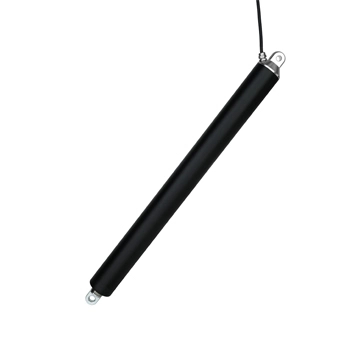In recent years, smart home automation has become increasingly popular as people seek ways to simplify their daily routines and enhance the functionality of their homes. One crucial component of home automation systems is the smart linear actuator, which plays a key role in controlling the movement of various devices and mechanisms. In this blog, we will explore the applications of smart linear actuators in home automation and how they can revolutionize the way we interact with our living spaces.
Before delving into their applications in home automation, let's first understand what smart linear actuators are. Put simply, a linear actuator is a device that converts energy into linear motion, allowing for the precise control of movement in a straight line. Smart linear actuators take this concept a step further by integrating sensors, controllers, and communication modules, enabling them to be remotely controlled and programmed for automated functions.
Automated Window and Blinds Control
One of the most popular applications of smart linear actuators in home automation is the control of windows and blinds. By installing smart linear actuators on windows and blinds, homeowners can effortlessly adjust the amount of natural light entering their homes, regulate temperature levels, and enhance privacy with the touch of a button. Additionally, smart actuators can be programmed to open and close windows at specific times, providing ventilation and air circulation when needed.
Motorized Furniture and Cabinetry
Another innovative application of smart linear actuators in home automation is the automation of furniture and cabinetry. By incorporating smart actuators into cabinets, drawers, and even beds, homeowners can create dynamic and versatile living spaces that adapt to their needs. For example, a smart linear actuator can be used to lift a television from a hidden compartment in a cabinet, swivel it to the desired angle, and lower it back down when not in use. This level of automation not only adds a touch of luxury to the home but also maximizes space and functionality.
Smart Lighting and Home Security Systems
In addition to enhancing convenience and comfort, smart linear actuators can also play a crucial role in home security and energy efficiency. By integrating smart actuators into lighting fixtures, homeowners can create customized lighting scenarios that adjust to their preferences and daily routines. For example, smart actuators can be programmed to open and close curtains or blinds when the lights are turned on or off, mimicking human presence and deterring potential intruders. Furthermore, smart actuators can be used to control the positioning of security cameras and motion sensors, ensuring optimal coverage and visibility.
The Future of the Smart Linear Actuator
In conclusion, smart linear actuators are versatile and powerful devices that have the potential to revolutionize the way we interact with our homes. From automating window and blinds control to motorizing furniture and cabinetry, the applications of smart linear actuators in home automation are limitless. By incorporating these cutting-edge technologies into their living spaces, homeowners can enjoy greater convenience, comfort, and control over their environment. As the demand for smart home automation continues to grow, smart linear actuators will undoubtedly play a central role in shaping the future of modern living.
 DDTG-16 Micro Tubular Linear Actuator
DDTG-16 Micro Tubular Linear Actuator
 DDTG-28 Micro Tubular Linear Actuator
DDTG-28 Micro Tubular Linear Actuator
 DDTG-38 Micro Tubular Linear Actuator
DDTG-38 Micro Tubular Linear Actuator












